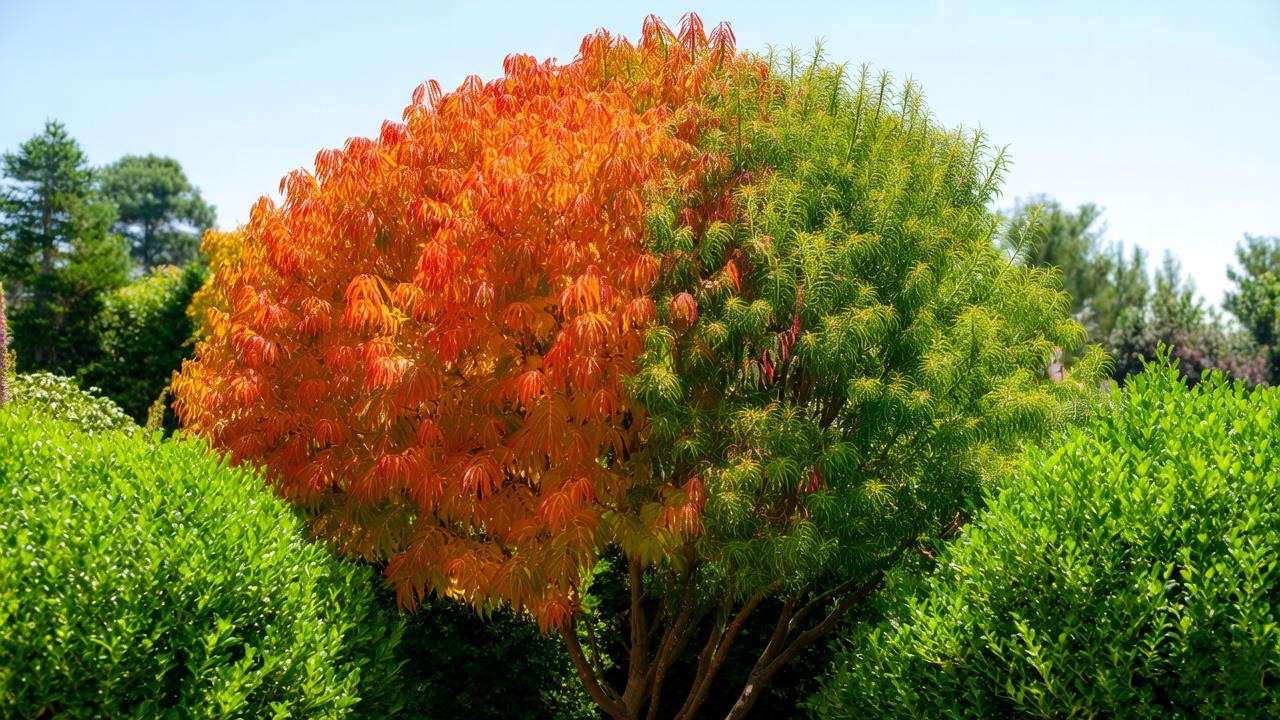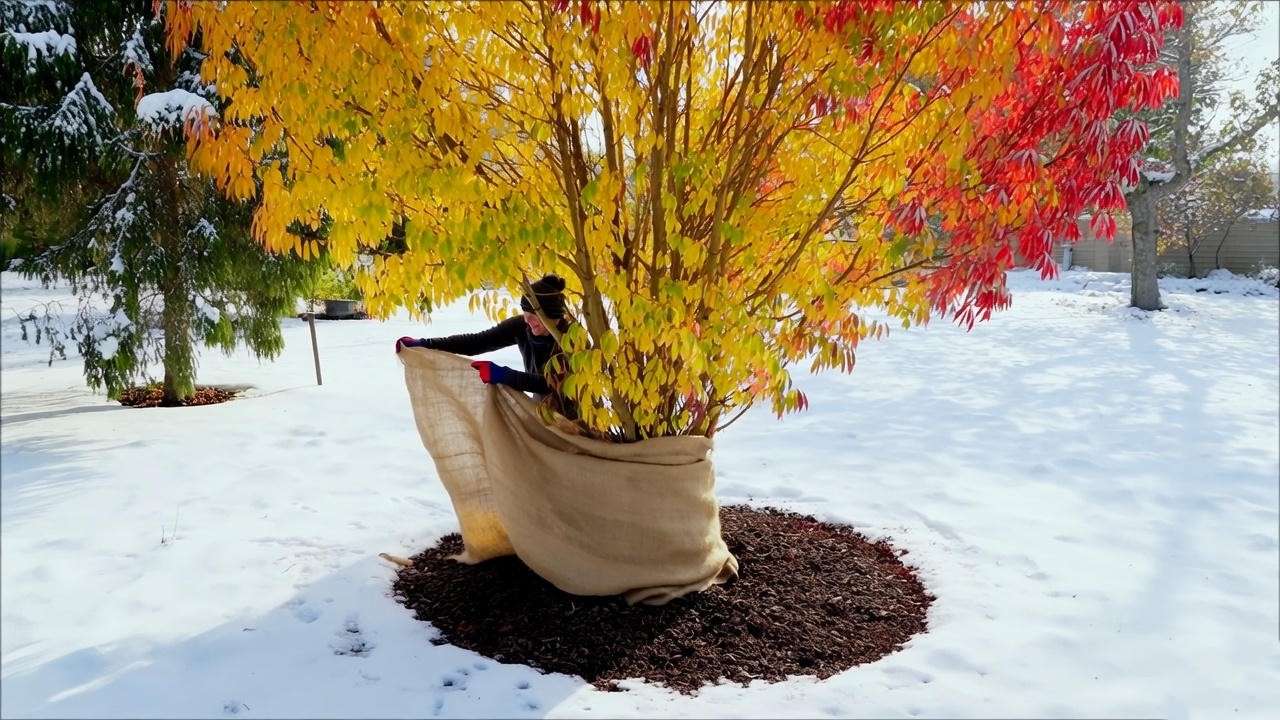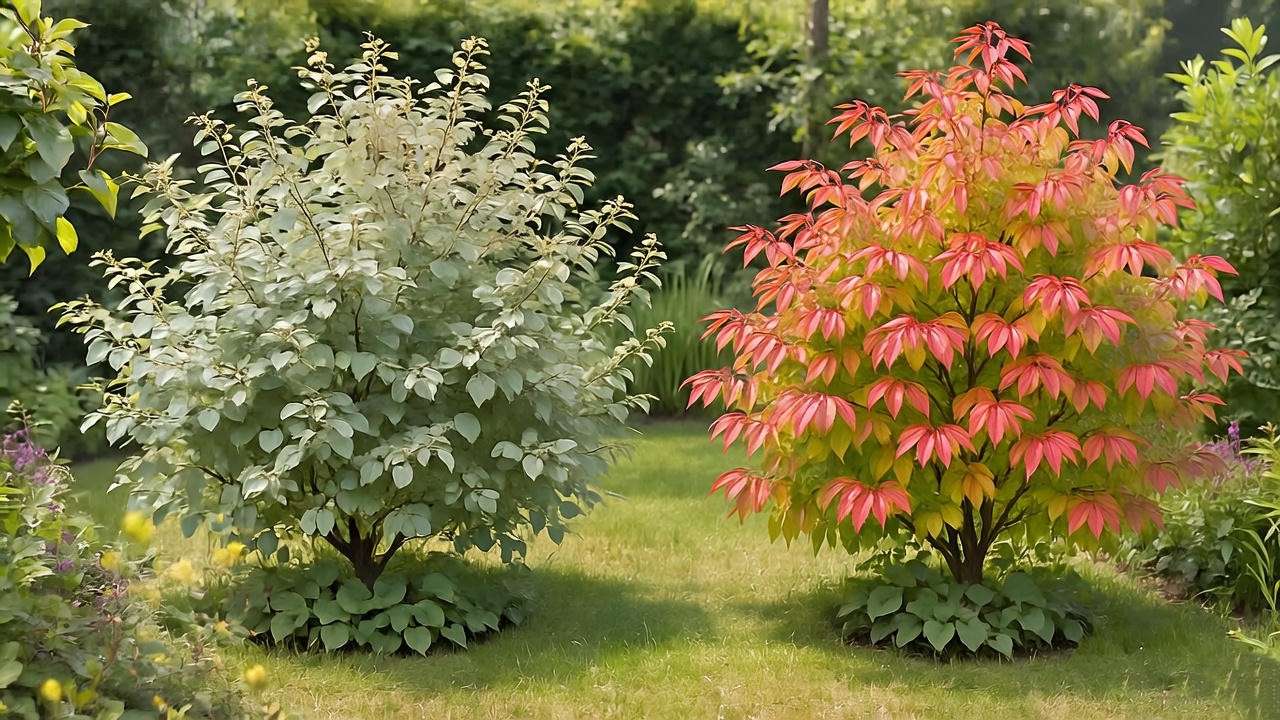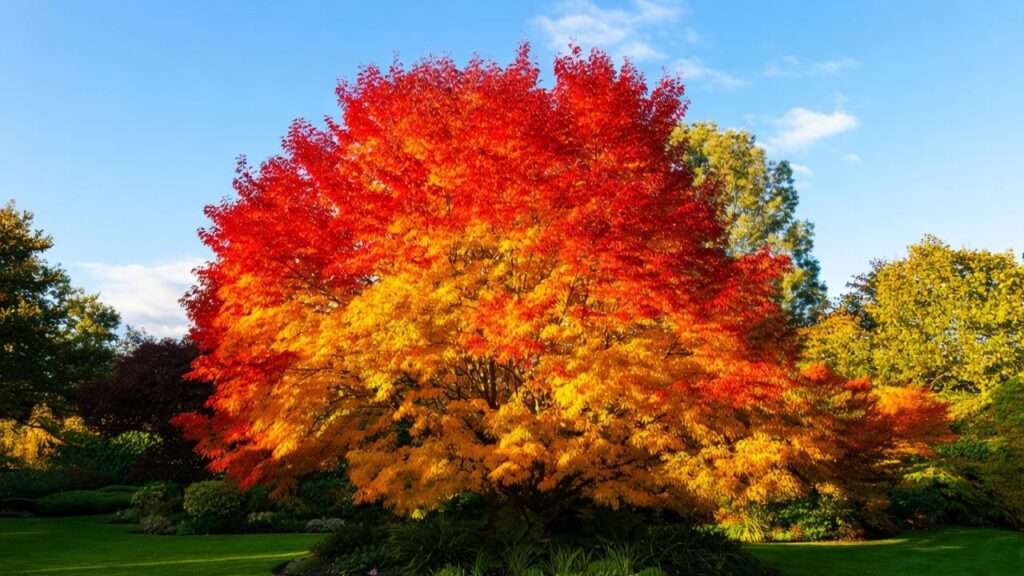Imagine stepping into your garden as autumn arrives, greeted by a breathtaking display of fiery reds, golden yellows, and vibrant oranges from your color tree. These stunning trees, known for their vivid seasonal foliage, transform landscapes into living works of art. Yet, maintaining that show-stopping vibrancy requires more than just planting and hoping for the best. Whether you’re nurturing a Japanese maple, a red oak, or a sweetgum, the journey to a healthy, colorful tree can be challenging without the right knowledge. In this guide, we’ll share seven expert-backed tips to ensure your color tree thrives, delivering dazzling foliage year after year. 🌈
As a horticulturist with over a decade of experience in tree care, I’ve worked with countless gardeners to overcome common issues like dull leaves, pest infestations, and poor growth. Drawing on insights from certified arborists and the latest research from university extension services, this article offers practical, science-based advice to help you cultivate a vibrant color tree. Whether you’re a seasoned gardener or a beginner, these tips will empower you to address specific needs, solve real problems, and create a stunning focal point in your landscape. Let’s dive in! 🌿
Understanding Color Trees and Their Unique Needs 🌿
What Makes a Color Tree Special?
Color trees are prized for their spectacular foliage, which changes dramatically with the seasons. Species like red maples (Acer rubrum), Japanese maples (Acer palmatum), dogwoods (Cornus florida), and sweetgums (Liquidambar styraciflua) are celebrated for their vibrant hues, ranging from crimson to gold. These trees don’t just enhance your garden’s aesthetic—they also support local ecosystems by providing shade, attracting pollinators, and improving air quality. For example, a well-placed Japanese maple can turn a dull backyard into a serene, colorful retreat, especially in fall when its leaves blaze with intensity.
However, their beauty comes with unique care requirements. Unlike evergreens, color trees rely on precise environmental conditions to produce vivid foliage and maintain overall health. Understanding these needs is the first step to success.
Common Challenges in Color Tree Care
Color trees face several challenges that can dull their vibrancy or compromise their health. Common issues include:
- Leaf Scorch: Caused by insufficient water or excessive heat, leading to brown, crispy leaf edges.
- Poor Color Development: Often due to nutrient deficiencies or improper sunlight exposure.
- Pests and Diseases: Aphids, scale insects, and fungal diseases like anthracnose can weaken trees.
- Environmental Stress: Extreme weather, poor soil, or improper planting can stunt growth.
“Color trees are like the divas of the plant world—stunning but demanding,” says Dr. Emily Carter, a certified arborist with 15 years of experience. “They require tailored care to shine, but the results are worth it.” By addressing these challenges with expert strategies, you can ensure your color tree remains a showstopper.
Tip 1: Choose the Right Color Tree for Your Climate 🌍
Matching Trees to Your USDA Hardiness Zone
Selecting a color tree suited to your climate is critical for long-term success. The USDA Hardiness Zone map helps you identify species that thrive in your region’s temperature range. For instance, red maples are hardy in zones 3–9, making them versatile for many climates, while Japanese maples prefer zones 5–8 and may struggle in extreme cold or heat.
Here’s a quick guide to popular color trees and their ideal zones:
| Tree Species | USDA Zones | Key Features |
| Red Maple (Acer rubrum) | 3–9 | Vibrant red fall foliage, fast-growing |
| Japanese Maple (Acer palmatum) | 5–8 | Delicate, colorful leaves, ideal for small spaces |
| Dogwood (Cornus florida) | 5–9 | Spring blooms, red fall foliage |
| Sweetgum (Liquidambar styraciflua) | 5–9 | Star-shaped leaves, brilliant fall colors |
Before purchasing, check your local USDA zone and consult with a nursery to confirm compatibility. Choosing the right tree prevents costly mistakes and ensures vibrant foliage.
Soil and Sunlight Requirements
Color trees thrive in specific soil and light conditions. Most prefer well-drained, slightly acidic soil (pH 5.5–6.5) and moderate sunlight. For example, Japanese maples need partial shade to avoid leaf scorch, while red maples tolerate full sun. Test your soil’s pH with a home kit (available at garden centers) and amend it with organic matter like compost if needed. Proper site selection sets the foundation for a healthy, colorful tree.
Tip: If your soil is heavy clay or overly sandy, consider raised beds or container planting for better drainage.
Tip 2: Master Proper Planting Techniques 🌱
When and Where to Plant
Timing and location are crucial for establishing a healthy color tree. Plant in early spring or fall when temperatures are mild, allowing roots to establish before extreme weather. Avoid planting in summer, as heat stress can hinder growth. Choose a site with good drainage, adequate sunlight, and protection from strong winds. For example, placing a dogwood in a spot with morning sun and afternoon shade enhances its bloom and foliage color.
Step-by-Step Planting Guide
Follow these steps for successful planting:
- Dig the Hole: Make it twice as wide and as deep as the root ball to encourage root spread.
- Amend the Soil: Mix native soil with compost to improve fertility and drainage.
- Position the Tree: Place the tree so the root flare (where roots meet the trunk) is slightly above ground level.
- Backfill and Water: Fill the hole, tamp down gently, and water thoroughly to eliminate air pockets.
- Mulch: Apply a 2–3 inch layer of organic mulch (e.g., wood chips) around the base, keeping it away from the trunk.
Checklist for Success:
- Avoid planting too deep to prevent root rot.
- Stake young trees if exposed to wind.
- Water immediately after planting to settle the soil.
“Planting correctly is like giving your tree a strong foundation for life,” notes Dr. Carter. A well-planted tree establishes faster and produces more vibrant foliage.

Tip 3: Optimize Watering for Vibrant Foliage 💧
Watering Needs by Season
Proper watering is essential for healthy roots and vivid leaves. Newly planted color trees need consistent moisture—about 1 inch of water per week—while established trees require less frequent but deeper watering. Adjust based on season:
- Spring: Water weekly to support new growth.
- Summer: Increase frequency during heatwaves, ensuring deep soil penetration.
- Fall: Reduce watering as trees prepare for dormancy, but don’t let roots dry out.
- Winter: Water sparingly, only during prolonged dry spells.
Use a soaker hose or drip irrigation for efficient, deep watering, which encourages strong root systems.
Signs of Over- or Under-Watering
Monitor your tree for these symptoms:
- Under-Watering: Wilting leaves, dry soil, or premature leaf drop.
- Over-Watering: Yellowing leaves, soggy soil, or fungal growth near the trunk.
For example, a gardener in Virginia saved a struggling Japanese maple by reducing watering frequency and improving drainage, restoring its vibrant red foliage within a season. If issues persist, check soil moisture with a meter or consult a local extension service.
Tip: Water early in the morning to minimize evaporation and fungal risks.
Tip 4: Feed Your Tree for Maximum Color 🍂
Understanding Nutrient Needs
Nutrients like nitrogen (for leaf growth), phosphorus (for root development), and potassium (for overall vigor) are vital for vibrant foliage. Color trees often need extra nutrients to produce intense colors, especially in nutrient-poor soils. A soil test can reveal deficiencies, but most color trees benefit from a balanced, slow-release fertilizer (e.g., 10-10-10 or 12-4-8).
“Nutrient balance is key to unlocking a color tree’s full potential,” says Dr. Laura Simmons, a soil scientist at the University of Georgia. “Too much nitrogen can lead to lush leaves but dull colors, so moderation is critical.”
Fertilizing Schedule and Techniques
- When to Fertilize: Apply fertilizer in early spring before bud break to fuel growth. A second light application in early summer can support foliage development.
- How to Apply: Spread granular fertilizer evenly around the tree’s drip line (the area under the outer edge of the canopy), then water thoroughly.
- Precautions: Avoid over-fertilizing, which can burn roots or cause excessive leaf growth at the expense of color. Follow package instructions or consult a professional for custom blends.
For example, a sweetgum in a nutrient-poor yard showed dramatic color improvement after a spring application of slow-release fertilizer tailored to its needs.
Expert Tip: Incorporate organic amendments like composted manure for long-term soil health.
Tip 5: Prune Strategically for Health and Beauty ✂️
Why Pruning Matters
Pruning is more than just a cosmetic task; it’s essential for enhancing your color tree’s structure, health, and vibrancy. By removing dead or overcrowded branches, you improve airflow and light penetration, which directly contribute to richer foliage colors. Proper pruning also prevents disease and encourages balanced growth, ensuring your tree remains a stunning focal point. For instance, a well-pruned dogwood not only blooms more profusely in spring but also displays more vibrant red leaves in fall.
Timing is critical. Most color trees benefit from pruning in late winter or early spring, before new growth begins. This minimizes stress and allows the tree to heal quickly. Avoid pruning during active growth periods, as this can weaken the tree and dull its seasonal display.
Pruning Techniques for Beginners
Pruning can feel daunting, but with the right approach, even novices can do it effectively. Here’s a step-by-step guide:
- Gather Tools: Use clean, sharp tools like bypass pruners for small branches, loppers for medium ones, and a pruning saw for larger limbs. Sterilize tools with rubbing alcohol to prevent disease spread.
- Identify Targets: Remove dead, damaged, or crossing branches that rub together, as these can harbor pests or fungi.
- Make Clean Cuts: Cut just outside the branch collar (the swollen area where the branch meets the trunk) at a 45-degree angle to promote healing.
- Shape Sparingly: For aesthetic pruning, trim to maintain the tree’s natural form, especially for species like Japanese maples that thrive with minimal shaping.
- Limit Removal: Never remove more than 20–25% of the canopy in one season to avoid stressing the tree.
Visual Aid: Imagine a red maple with crowded inner branches blocking sunlight. By selectively thinning these, you allow light to reach the leaves, boosting chlorophyll breakdown for brighter fall colors.
Tip: If unsure, hire a certified arborist for major pruning or consult resources from the International Society of Arboriculture (ISA). For example, a gardener in North Carolina transformed a lackluster sweetgum by following ISA guidelines, resulting in a vibrant, star-shaped canopy.

Tip 6: Protect Against Pests and Diseases 🐛
Common Threats to Color Trees
Pests and diseases can rob your color tree of its vibrancy and vitality. Common culprits include:
- Pests:
- Aphids: Small sap-sucking insects that cause curled leaves and stunted growth.
- Scale: Tiny, shell-like pests that weaken branches and dull foliage.
- Japanese Beetles: Chew holes in leaves, reducing photosynthetic capacity.
- Diseases:
- Anthracnose: A fungal disease causing dark spots and leaf drop, common in dogwoods.
- Powdery Mildew: White coating on leaves, often affecting maples in humid conditions.
- Verticillium Wilt: A soil-borne fungus that blocks water flow, leading to wilting and dieback.
These threats can diminish your tree’s color intensity and overall health if left unchecked. Regular monitoring is key to early detection.

Prevention and Treatment
Preventing pest and disease issues starts with proactive care:
- Maintain Tree Health: Healthy trees are more resistant. Follow watering, fertilizing, and pruning tips to reduce stress.
- Inspect Regularly: Check leaves, branches, and bark monthly for signs of trouble, like sticky residue (aphids) or discolored spots (fungal infections).
- Use Eco-Friendly Controls: Apply neem oil or insecticidal soap for pests like aphids and scale. For fungal issues, use copper-based fungicides sparingly, following label instructions.
- Clean Up Debris: Remove fallen leaves and branches to prevent fungal spores from overwintering.
Case Study: A homeowner in Ohio noticed their red maple’s leaves turning brown prematurely. After consulting their local extension service, they applied neem oil to control aphids and adjusted watering, restoring the tree’s vibrant red fall display within two seasons.
Expert Tip: Contact your local university extension service for region-specific pest and disease advice. They often provide free diagnostic services and tailored recommendations.
Tip 7: Enhance Seasonal Care for Year-Round Vibrancy 📅
Seasonal Maintenance Checklist
To keep your color tree thriving, follow this month-by-month care guide:
- January–February: Inspect for winter damage; prune lightly if needed. Apply mulch to insulate roots.
- March–April: Fertilize and begin regular watering as growth resumes. Check for early pests.
- May–June: Monitor for pests and diseases; water deeply during dry spells. Thin branches for better airflow.
- July–August: Increase watering during heatwaves; apply mulch to retain moisture. Watch for leaf scorch.
- September–October: Prepare for fall by reducing watering and removing debris. Enjoy the color show!
- November–December: Protect young trees with burlap wraps in cold climates; water sparingly during dry winters.
This schedule ensures your tree remains healthy and ready to produce vibrant foliage each season.

Mulching and Winter Protection
Mulching is a game-changer for color trees. A 2–3 inch layer of organic mulch, like wood chips or shredded bark, retains moisture, regulates soil temperature, and suppresses weeds. Apply mulch in a ring around the tree, keeping it 2–3 inches away from the trunk to prevent rot. In winter, mulch insulates roots against freezing temperatures, especially for young trees.
For added winter protection in colder zones (e.g., USDA 4–5):
- Wrap trunks of young trees with burlap or tree guards to prevent frost cracks and rodent damage.
- Avoid piling snow against the trunk, as it can harbor fungi.
- Water deeply before the ground freezes to ensure hydration through winter.
Tip: Refresh mulch annually in spring to maintain its benefits. A well-mulched Japanese maple, for instance, can better withstand summer heat and winter cold, ensuring vivid foliage.
Bonus: Troubleshooting Common Color Tree Problems 🔍
To help you address issues quickly, here’s a troubleshooting guide for common color tree problems:
| Symptom | Possible Cause | Solution |
| Dull or faded foliage | Nutrient deficiency, insufficient light | Test soil; fertilize with balanced fertilizer; ensure adequate sunlight. |
| Brown, crispy leaf edges | Leaf scorch from drought or heat | Increase deep watering; provide partial shade during heatwaves. |
| Spots or powdery coating | Fungal disease (e.g., powdery mildew) | Apply fungicide; improve airflow through pruning; remove infected debris. |
| Wilting or yellowing leaves | Over-watering or poor drainage | Check soil moisture; improve drainage with raised beds or amended soil. |
| Chewed leaves or sticky residue | Pest infestation (e.g., aphids) | Use neem oil or insecticidal soap; introduce beneficial insects like ladybugs. |
Example: A reader reported their dogwood’s leaves turning yellow in midsummer. After testing the soil and finding soggy conditions, they improved drainage by adding compost and reduced watering, restoring the tree’s health by the next season.
Pro Tip: Keep a gardening journal to track symptoms, treatments, and outcomes. This helps identify patterns and refine your care routine.

FAQs About Color Tree Care ❓
Q1: Why are my color tree’s leaves not changing color vibrantly?
A: Dull colors often result from nutrient deficiencies, insufficient sunlight, or stress. Test your soil for pH and nutrient levels, ensure 4–6 hours of sunlight daily, and fertilize in early spring with a balanced formula.
Q2: How often should I water my newly planted color tree?
A: Water 1–2 times per week, providing 1 inch of water to encourage deep root growth. Adjust based on rainfall and soil drainage.
Q3: Can I plant a color tree in a container?
A: Yes, especially for compact species like Japanese maples. Use a large container with drainage holes, well-draining soil, and water regularly to prevent drying out.
Q4: What’s the best fertilizer for a Japanese maple?
A: A slow-release, balanced fertilizer (e.g., 10-10-10) applied in early spring works well. Avoid high-nitrogen formulas to prevent excessive leaf growth over color.
Q5: How do I know if my tree is stressed?
A: Look for wilting, yellowing, or dropping leaves, stunted growth, or cracked bark. Address underlying issues like watering, nutrients, or pests promptly.
Conclusion
Your color tree has the potential to be the star of your garden, dazzling with vibrant hues each season. By following these seven essential tips—choosing the right tree, planting correctly, watering wisely, fertilizing strategically, pruning carefully, protecting against pests, and maintaining seasonal care—you can ensure your tree thrives for years to come. 🌟 These science-backed strategies, informed by experts like certified arborists and soil scientists, empower you to overcome common challenges and unlock your tree’s full potential.
Start implementing these tips today, and share your progress in the comments below! For more plant care insights, explore our articles on companion plants for color trees or designing a fall garden. With a little effort, your color tree will reward you with a spectacular display that elevates your landscape. 🌳













